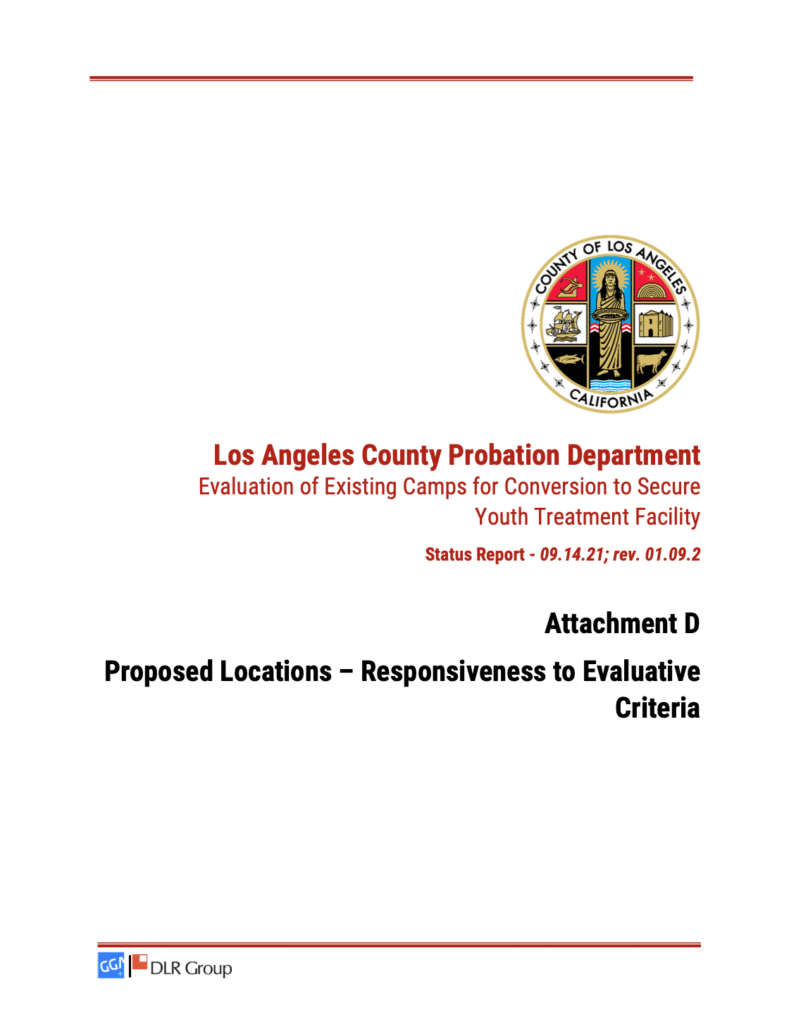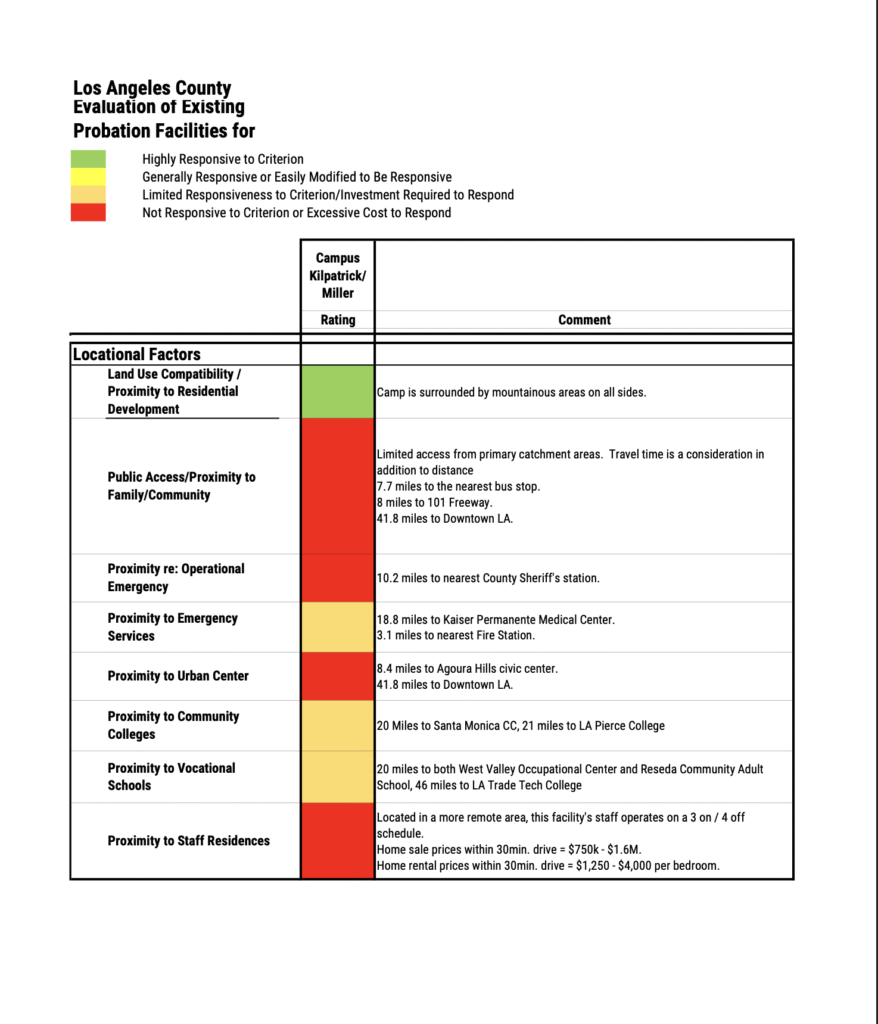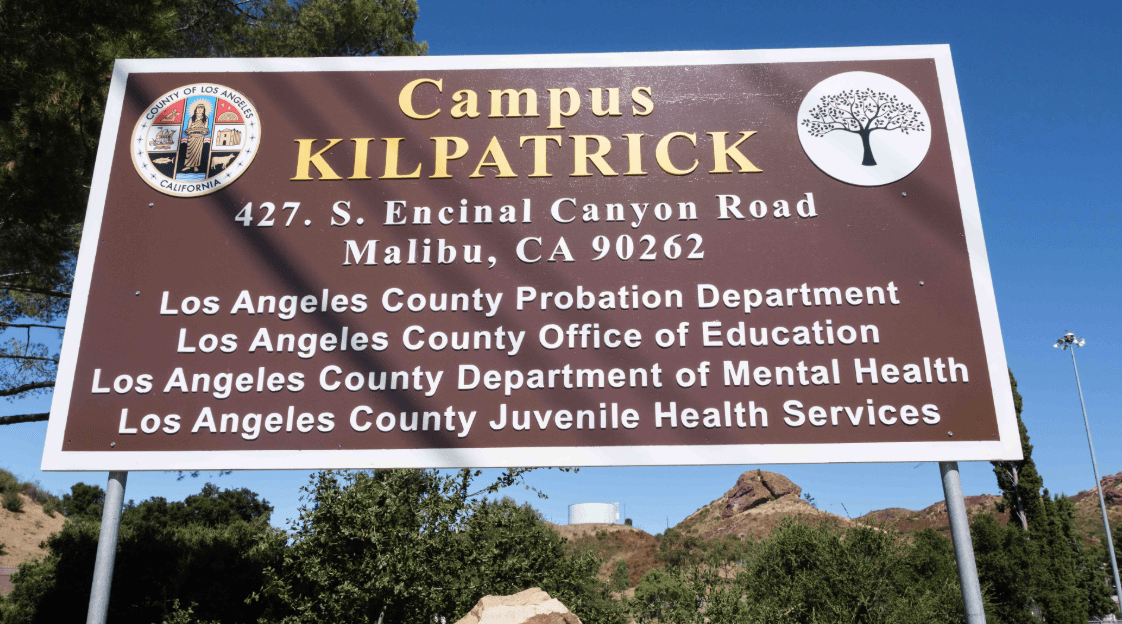Los Angeles County is quietly advancing a plan that could turn Malibu’s once-celebrated Campus Kilpatrick, built as a sports-based rehabilitation camp for at-risk youth, into a Secure Youth Treatment Facility intended to house the county’s most violent juvenile offenders – and by violent, I mean stone cold murderers.
This shift traces directly back to a 2021 Board of Supervisors motion authored by Kathryn Barger and Hilda Solis. The motion, titled “Identifying a Compliant Location to House, Care, and Support Former Department of Juvenile Justice Youth,” was introduced on July 27, 2021, as part of the county’s compliance with Senate Bill 823, Governor Gavin Newsom’s so-called “Juvenile Justice Realignment” plan. SB 823 was meant to close the state’s Department of Juvenile Justice and transfer the responsibility of housing and supervising serious youth offenders to local counties. On paper, the law promised reform, rehabilitation, and community-based reintegration. In reality, it opened the door for counties to quietly reclassify facilities and sidestep the very accountability measures the law was designed to enforce.
In Los Angeles County, that translated into the Probation Department’s unilateral power to transform Malibu’s open-air sports camp into a locked compound for high-risk offenders. But internal county documents reveal that Kilpatrick fails nearly every suitability test for this purpose. Page D49 of the Probation Department’s evaluation is littered with red flags – literally – marking the site unsafe, impractical, and prohibitively expensive to retrofit. The report cites serious deficiencies in emergency response, staffing, and access.



The County’s own report even states that emergency help is too far away from Kilpatrick to ensure safety. That risk isn’t theoretical, it’s been proven. When incarcerated youth were transferred to Los Padrinos, chaos erupted almost immediately. Youth escaped, fights broke out, and the Probation Department was forced to call in Downey and South Gate police, along with Lakewood Sheriff’s deputies, to regain control. Malibu offers no such backup. The area is geographically isolated, with the nearest Sheriff’s station ten miles away and no city police department to assist. The Malibu/Lost Hills Sheriff’s Station is already chronically understaffed and simply not equipped to mount a large-scale emergency response in a violent disturbance or mass escape scenario.
The camp’s location compounds the danger. The nearest bus stop is nearly eight miles away. The closest freeway is another eight. The nearest hospital is nineteen miles out, and Downtown Los Angeles is more than forty miles from the facility. In an emergency, whether fire, medical, or security, help won’t arrive quickly, if at all. That isolation also creates chronic staffing problems. The County’s own analysis acknowledges that the distance from affordable housing makes recruitment nearly impossible, forcing staff into an unsustainable “three on, four off” rotation.
And while the Board of Supervisors constantly preaches about keeping detained youth close to their families to maintain community ties, the Kilpatrick plan makes a mockery of that ideal. None of the youth slated for Kilpatrick live in or anywhere near Malibu. This is pure virtue signaling, political optics over practical reform. The Supervisors can tout family access and rehabilitation in press conferences, but sending these youth to a remote canyon in the Santa Monica Mountains ensures the opposite.
Kilpatrick’s design flaws only make matters worse. The facility lacks sufficient staff quarters to maintain safe staffing ratios after hours. In a scramble to compensate, the Department is now exploring the purchase of temporary trailers to place on the grounds of the former Camp Miller, allowing staff to sleep nearby. Even so, those trailers are miles from Kilpatrick, leaving staff unable to respond quickly in a crisis. The entire arrangement underscores just how ill-conceived and dangerous this plan really is.
Kilpatrick was built as a model for youth rehabilitation, a sports-focused, therapeutic environment designed to heal, not harden. The campus features open fields, classrooms, and shared spaces meant to promote teamwork and emotional growth. Turning that environment into a high-security detention center is like trying to convert a Little League park into a maximum-security prison. There is no indication that the Sheriff’s Department has conducted a comprehensive security audit, nor any evidence of updated fire evacuation or escape protocols. In a region repeatedly devastated by wildfires, that omission borders on criminal negligence.
The July 27, 2021 motion by Barger and Solis framed the realignment as an opportunity for “community-based transformation,” yet it effectively authorized the creation of a remote, underprepared lockdown facility in one of the most fire-prone, inaccessible areas of Los Angeles County. It was bureaucratic sleight of hand — a political maneuver cloaked in reformist language that now endangers staff, youth, and the Malibu community.

This is not rehabilitation. It’s negligence wrapped in bureaucracy. Kilpatrick was designed to inspire change, not to contain chaos. Converting it into a secure treatment facility for violent offenders isn’t progress, it’s a catastrophic misstep that ignores every warning from experts, staff, and common sense.
A Pattern of Concealment
The Kilpatrick conversion is not an isolated failure. It’s part of a larger, deeply entrenched pattern within the Los Angeles County Probation Department, a department long plagued by scandal, cover-ups, and federal scrutiny. Similar reclassification efforts have occurred quietly at Central Juvenile Hall and Barry J. Nidorf, where the county continued to warehouse high-risk youth in facilities repeatedly cited for inhumane conditions, staff abuse, and safety violations.
In 2023, the California Board of State and Community Corrections deemed both facilities “unsuitable for confinement,” forcing the County to temporarily relocate youth populations while publicly downplaying the crisis. Behind closed doors, however, the same officials were already planning to rebrand Kilpatrick as a “model secure facility”, despite internal reports warning it could never safely serve that purpose.
Each move follows the same playbook: rebrand, rename, and repackage existing failures under the banner of “reform.” From the Department’s misleading compliance reports to the Board of Supervisors’ rubber-stamp approvals, transparency has been replaced with political theater. Public input is nonexistent, safety audits are buried, and the county continues to gamble with human lives, both the youth in its custody and the surrounding communities.
Kilpatrick’s conversion isn’t a step forward in juvenile justice. It’s the latest chapter in Los Angeles County’s long-running cover-up of systemic dysfunction inside its probation system. Unless the Board halts the reclassification and orders a full public investigation, this will end the same way so many of L.A. County’s “reforms” have, with another tragedy no one claims to have seen coming.


Follow Us